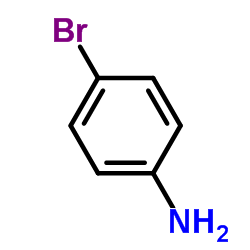Microbial mineralization of ring-substituted anilines through an ortho-cleavage pathway.
J Zeyer, A Wasserfallen, K N Timmis
文献索引:Appl. Environ. Microbiol. 50(2) , 447-53, (1985)
全文:HTML全文
摘要
Moraxella sp. strain G is able to utilize as sole source of carbon and nitrogen aniline, 4-fluoroaniline, 2-chloroaniline, 3-chloroaniline, 4-chloroaniline (PCA), and 4-bromoaniline but not 4-iodoaniline, 4-methylaniline, 4-methoxyaniline, or 3,4-dichloroaniline. The generation time on PCA was 6 h. The pathway for the degradation of PCA was investigated by analysis of catabolic intermediates and enzyme activities. Mutants of strain G were isolated to enhance the accumulation of specific pathway intermediates. PCA was converted by an aniline oxygenase to 4-chlorocatechol, which in turn was degraded via a modified ortho-cleavage pathway. Synthesis of the aniline oxygenase was inducible by various anilines. This enzyme exhibited a broad substrate specificity. Its specific activity towards substituted anilines seemed to be correlated more with the size than with the electron-withdrawing effect of the substituent and was very low towards anilines having substituents larger than iodine or a methyl group. The initial enzyme of the modified ortho-cleavage pathway, catechol 1,2-dioxygenase, had similar characteristics to those of corresponding enzymes of pathways for the degradation of chlorobenzoic acid and chlorophenol, that is, a broad substrate specificity and high activity towards chlorinated and methylated catechols.
相关化合物
| 结构式 | 名称/CAS号 | 分子式 | 全部文献 |
|---|---|---|---|
 |
对溴苯胺
CAS:106-40-1 |
C6H6BrN |
|
Synthetic and biological studies on thioxoquinazolinone subs...
2015-07-01 [J. Environ Biol. 36 , 909-18, (2015)] |
|
Biopartitioning micellar chromatography to predict mutagenic...
2007-01-01 [Eur. J. Med. Chem. 42 , 1396-402, (2007)] |
|
Acute metobromuron poisoning with severe associated methemog...
2000-04-01 [J. Anal. Toxicol. 24(3) , 157-64, (2000)] |
|
Spectrophotometric determination of carnosine, anserine, and...
1980-11-01 [Anal. Biochem. 108(2) , 303-5, (1980)] |
|
Characterisation of putative pentose-containing conjugates a...
2003-01-01 [Rapid Commun. Mass Spectrom. 17(1) , 76-80, (2003)] |